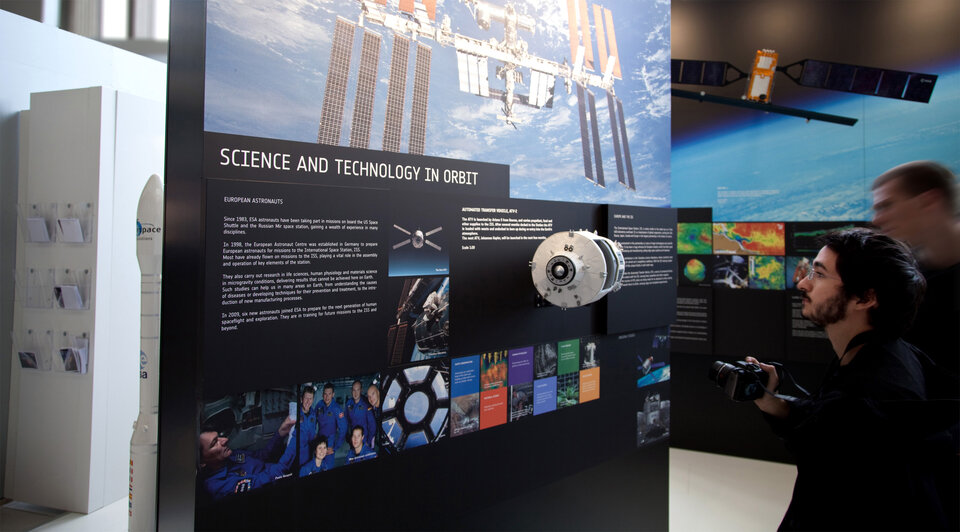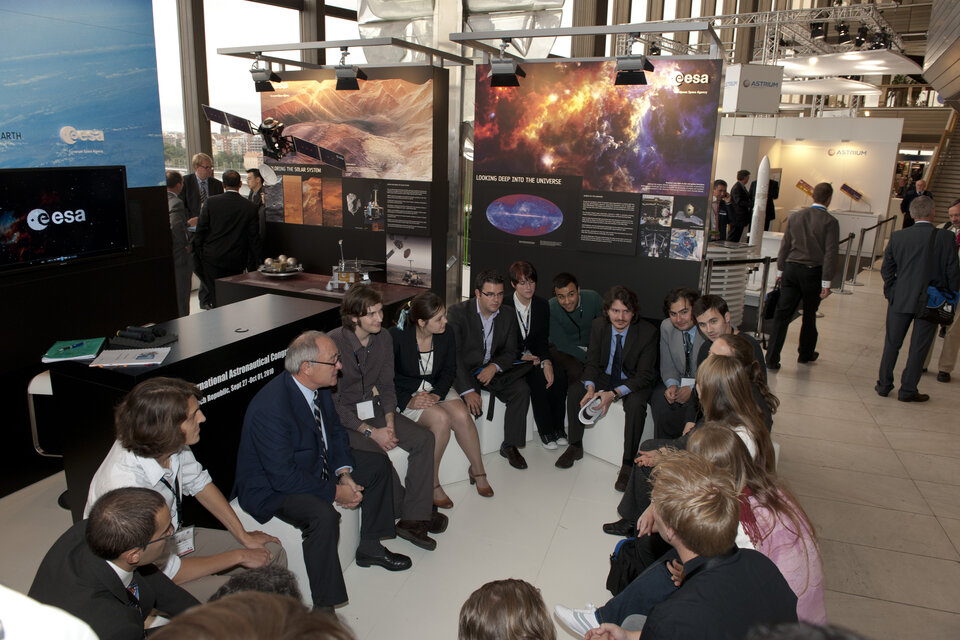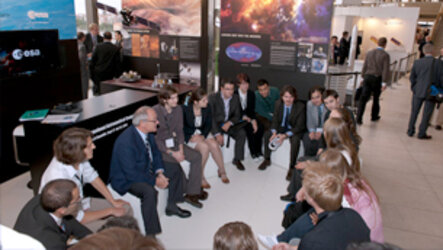ESA exhibition at International Astronautical Congress
The 63rd International Astronautical Congress will take place in Naples, Italy, 1–5 October with the theme ‘Space science and technology for the needs of all’.
The International Astronautical Congress (IAC) is organised every year by the International Astronautical Federation and its associates, the International Academy of Astronautics and the International Institute of Space Law.
IAC is the world’s premier international space gathering, attracting about 3000 delegates and bringing together space agencies, industry, scientists, engineers, managers, young professionals and students from all over the world.
Over 2000 papers will be presented within a rich and varied technical programme.

The ESA exhibition ‘Space for Earth’ will be located in Hall 3B of the Mostra d’Oltremare congress centre, and will highlight the role of space for knowledge, competitiveness and growth.
Complementing the proposals to be tabled at the ESA Council at Ministerial Level to be held in November, the ESA exhibition will underline the importance of space systems and applications to improve knowledge, foster innovation and competitiveness and bring benefits to Earth.
With the latest results from astronomy and planetary missions, ESA will show how space data bring important knowledge to understand Earth, exploring its unique place in the Solar System and Universe.
A simulated Mars terrain will feature scale models of two elements of ExoMars, ESA’s next mission to the Red Planet, which will include a descent and landing demonstrator module and Europe’s first Mars rover.

Future missions for human exploration beyond the low orbit of the International Space Station will be featured, together with some of the cutting-edge scientific results from experiments carried out in microgravity on Columbus and other space laboratories.
ESA’s Earth observation satellites have given Europe a leading role in understanding our planet, weather and climate change, providing data and services to a vast community of users.
From their special vantage point, satellites continuously monitor Earth and its natural processes, bringing critical information as to how climate, gravity and the magnetic field affect our planet and detect changes taking place in our atmosphere, land, oceans and ice.
Particular emphasis is placed on new data from ESA’s CryoSat ice mission and on Swarm, the next mission to be launched in the series of Earth Explorers.
The exhibition will feature the next generation of Meteosat and MetOp weather and climate satellites.
ESA will also display maps created for disaster relief following natural catastrophes under the International Charter on Space and Major Disasters, co-founded by ESA in 2000.
A special feature will focus on the first in the series of ESA’s Sentinel satellites, part of the EU’s Global Monitoring for the Environment and Security initiative, GMES.

Visitors to the stand can learn more about space-based services provided to aviation by EGNOS, the European Geostationary Navigation Overlay Service, operational since March 2011, and about the Galileo constellation, with two satellites already in orbit and two more being launched later this year.
Visitors will also learn how ESA is supporting competitiveness of the satellite telecom industry with Hylas-1, ESA’s first public–private partnership, that has provided innovative broadband services across Europe since 2011, and the upcoming launch of Alphasat, flying on Alphabus, the first European large platform for high-power telecommunications satellites.
The European Data Relay System, EDRS, an independent European geostationary satellite network providing high-quality, quasi-realtime communication capability to low orbit satellites, will be displayed.
ESA also develops a wide range of telecom services and applications to provide space-based solutions in fields such as air traffic management and maritime surveillance efficiently and seamlessly over almost every region of our planet.

Modern life is increasingly dependent on services that rely on space-based technologies. Since 2012, Ariane 5, Soyuz and Vega are being launched from Europe’s Spaceport in French Guiana, providing a full range of launch capabilities for different types and sizes of satellites.
The development of technology is central to ESA’s existence, bringing future missions and applications within the realm of possibility. ESA shows its wide range of specialised laboratories in its ESTEC establishment and its highly successful Proba series of technology satellites.

IAC has a full programme of plenary sessions and highlight lectures open to the public.
During the week visitors can meet ESA specialists on the exhibition stand. Please follow ESA Exhibitions on Twitter, Facebook and Flickr for more information on related events and presentations.
The exhibition is open to the public on Friday, 5 October, from 10:00 to 17:00 CEST. A programme for the public day will be published shortly





